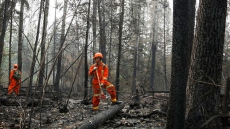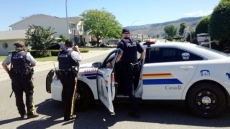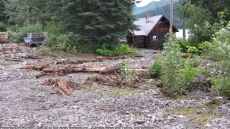VANCOUVER — Scientists have conclusively linked oil that washed up along numerous Vancouver beaches with the grain container ship that leaked bunker fuel in English Bay in April.
Testing by researchers from the Vancouver Aquarium also shows that the fuel may have harmed aquatic organisms and wildlife in the water and along the shores.
Peter Ross of the Vancouver Aquarium's Ocean Research Program and his team did a detailed forensic analysis of the oil from the MV Marathassa, looking at more than 100 hydrocarbons that create a unique so-called fingerprint.
The team then compared that information to samples of water, sediment and shellfish taken from beaches around Vancouver in the days following the spill, and found the link.
"We were able to fingerprint and identify the Marathassa as the source of these oiled shorelines," Ross said.
"Marathassa bunker fuel was unique. We have never seen that kind of a profile before in our coastal sediment here in British Columbia. Very unique, very powerful signature."
The results prove the oil reached several shores in Vancouver including New Brighton Beach about 12 kilometres away from the spill down the Burrard Inlet.
"For us, to be able to document where the oil went and to confirm that, we start to get a better picture of the likely impacts of this oil spill on valued marine life," Ross said.

Samples taken from Second Beach in Stanley Park and English Bay Beach also showed higher hydrocarbon levels than guidelines recommend, indicating that animals and sea life may have been harmed by the spill.
There may be negative impacts on a specie's reproduction or growth, or higher mortality rates, Ross said.
The aquarium team was the first to take water and sediment samples after a malfunction on the ship set off a spill of about 2,700 litres of bunker fuel on April 8.
"Somebody had to do this," he said. "You can't simply look at some oil on the shoreline of a very busy working harbour and just assume that it came from that spill."
Ross said he would like to see a program that regularly monitors hydrocarbons in coastal waters in order to make it easier to show the impact of spills when they happen, and trace where spilled oil came from.




